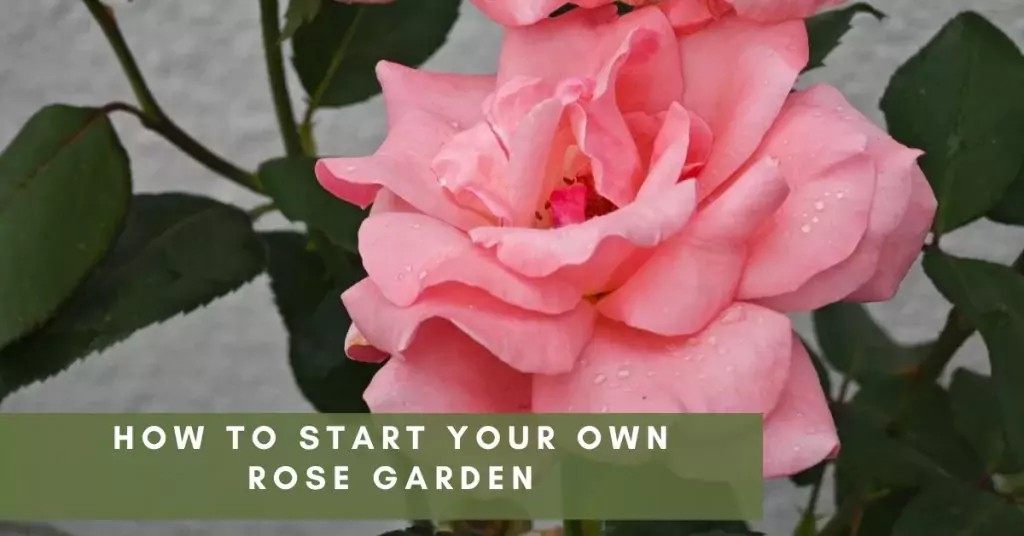Creating a rose garden is a delightful endeavor that promises a riot of colors and the sweet aroma of success. Roses have captivated hearts for centuries with their intoxicating fragrance and varied blooms. But for novice gardeners, growing these beauties can seem daunting. Fear not! With a little effort and planning, you can turn your space into a blooming rose garden.
Step 1: Location, Location, Location!
Roses are sun worshippers.
Choose a place that basks in at least 6-8 hours of direct sunlight daily. Optimal drainage is crucial to prevent root rot, so steer clear of areas with poor drainage or clay soil. Enhance the soil quality by incorporating compost or well-aged manure, ensuring the infusion of vital nutrients and promoting improved drainage.
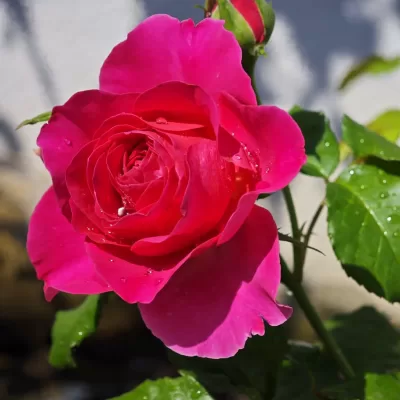
Step 2: Selecting your Rose Royalty
With over 30,000 varieties available, choosing roses can feel overwhelming. Consider factors like:
- Bloom type: From classic hybrid teas to cascading floribundas, each offers a unique visual experience.
- Maintenance level: Some roses require more frequent pruning and pest control. If you’re a beginner, choose disease-resistant varieties like Knock Out® roses.
- Color and fragrance: Choose colors that complement your existing landscape and fragrances that delight your senses.
Local nurseries or experienced rose growers can provide valuable guidance on selecting varieties suited to your climate and preferences.
Step 3: Soil Preparation
Roses flourish in soil with excellent drainage and maintain a slightly acidic to neutral pH. Before planting, enhance your soil by incorporating organic materials like compost, elevating its structure and fertility. Perform a soil test to gauge its pH level and nutrient composition, allowing you to make essential adjustments to ensure the ideal conditions for optimal rose growth.
Step 4: Planting with Care
Whether it’s spring or fall, the reasonable period for planting is when the soil temperature is moderate.
At this juncture, excavate a hole that exceeds the width and depth of the root ball by twofold, ensuring the most favorable conditions for planting. Gently loosen the roots and spread them before placing the rose bush in the hole. Ensure the bud union (the swollen area where the rose stem meets the rootstock) is slightly above the soil line. Water deeply and regularly, especially during the first few weeks
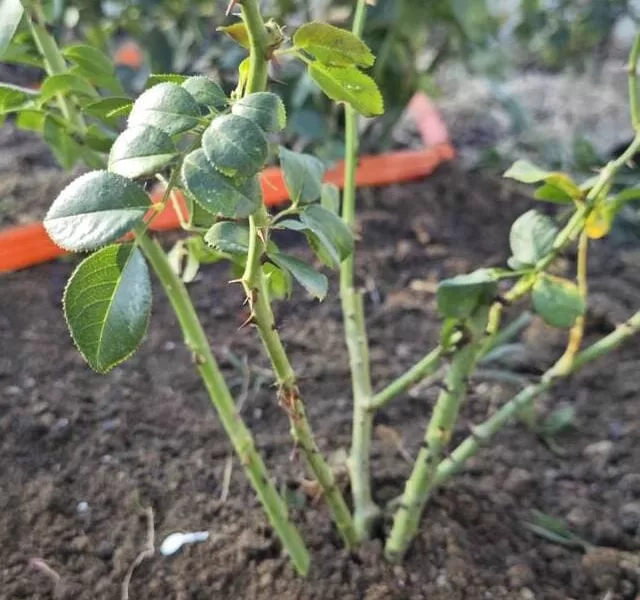
Step 5: Watering and Feeding
Adequate watering plays a pivotal role in maintaining the well-being of your rose garden. Ensure a deep and regular watering routine for your roses, preferably in the early morning, allowing the foliage ample time to dry throughout the day. Additionally, fertilize your roses
regularly with a balanced, slow-release fertilizer to promote robust growth and vibrant blooms.
Step 6: Pruning and Deadheading
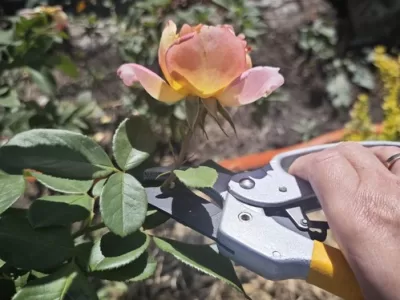
Trimming is crucial to uphold the form and well-being of your rose shrubs. Pruning should be performed in late winter or early spring, ensuring it is done before the onset of new growth. Remove dead or diseased wood, shape the plant, and encourage airflow within the bush. Regular deadheading – removing spent blooms – encourages the plant to produce more flowers and keeps your garden neat.
Step 7: Disease and Pest Management
Vigilance is vital when managing diseases and pests in your rose garden. Watch for common issues like black spots, powdery mildew, and aphids. Regularly inspect your roses and take prompt action if you notice any signs of trouble. Consider using organic or chemical solutions based on the severity of the problem.
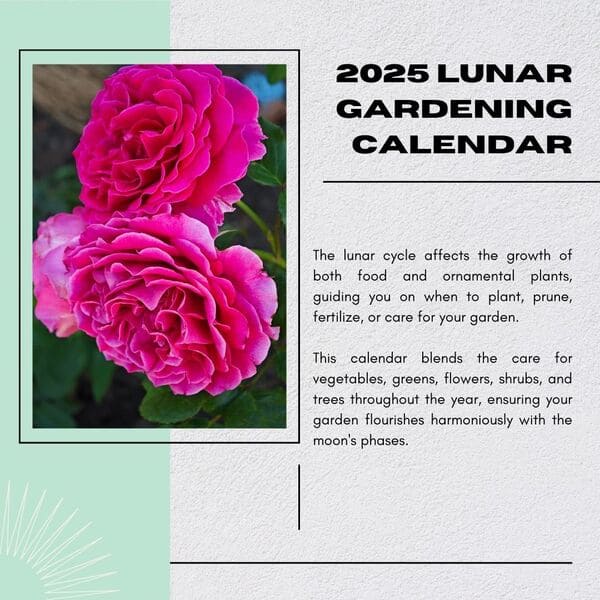
Get Your Free Lunar Gardener's Calendar 2025!
Join the Lunar Gardening Revolution! Subscribe now to receive our exclusive Free Lunar Gardener’s Calendar for 2025. Harness the power of the moon to optimize your planting, nurturing, and harvesting.
Beyond the Basics: Lifehacks for a Thriving Rose Garden
While proper care is essential, a few exciting lifehacks can add a little extra magic to your rose garden:
- Eggshell Power: Crushed eggshells around the base of your rose bush act as a natural calcium supplement and deterrent to slugs and snails.
- Coffee Ground Perks: Spent coffee grounds provide organic matter and help regulate soil pH, benefiting most roses. However, use them sparingly, as too much acidity can be harmful.
- Companion Planting Powerhouse: Plant fragrant herbs like lavender or rosemary near your roses to attract beneficial insects that prey on harmful pests.
- DIY Pest Control: Combine a tablespoon of fragrance-free dish soap with one quart of water in a spray bottle. This homemade solution can help deter aphids and other soft-bodied insects.
- Banana Peel Boost: Bury a banana peel (skin side down) near the base of your rose bush to add potassium, which promotes blooming and root development.
Starting a rose garden is a gratifying venture that rewards patience and care with breathtaking colors and scents. By following these comprehensive steps, you can cultivate a thriving rose garden that becomes a source of pride and joy. Now, get ready to don your work sleeves, delve into the soil, and watch your rose garden transform into a masterpiece of natural splendor. Happy gardening!
FAQs about growing Rose garden:
The ideal time to plant roses depends on your location and the climate. In general, late winter to early spring is a preferred planting time. This allows the roses to establish their root systems before the growing season. Aim for a time when the soil is workable but not frozen. Fall planting is also suitable for warmer climates, giving the roses time to acclimate before the summer heat. Steer clear of planting during the peak summer months to minimize stress on the young plants.
Roses generally thrive in temperatures between 56°F and 75°F (14°C to 24°C). However, they can tolerate a range of temperatures depending on the variety. Most roses require winter chill to break dormancy and encourage healthy blooms in the spring. Extreme temperatures, especially frost, can damage roses, so choosing varieties suited to your local climate is essential.
Garden roses can grow successfully in a variety of locations, but they thrive in conditions that meet their specific needs:
- Sunlight: Roses prefer full sun, defined as at least six hours of direct sunlight daily. Ensure that your garden provides adequate sunlight for optimal growth and blooming.
- Soil: Well-drained soil with a slightly acidic to neutral pH is ideal for roses. Enhancing the soil with organic materials elevates its structure and fertility.
- Climate: Different rose varieties are suited to various climates. Research and select roses that are well-adapted to your local climate, considering factors such as temperature extremes and winter chill requirements.
- Optimal Air Flow: Refrain from planting roses nearby to prevent diseases, as good air circulation is crucial. This is particularly important in humid climates where diseases can be more prevalent.
By meeting these conditions, you can create an environment where garden roses will flourish and reward you with their stunning beauty and fragrance.

